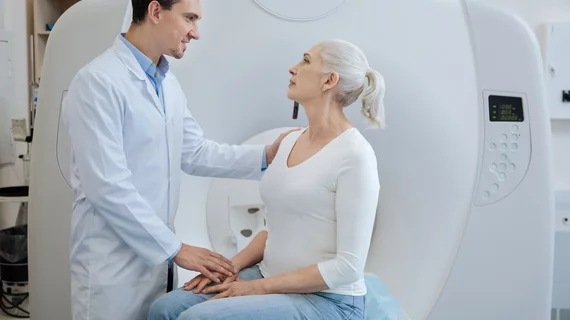4 lessons for radiologists to embrace generosity as ‘medical excellence’
How do you measure a successful radiology career? Is it money earned? Peer-reviewed studies published? Or is it something more?
Noted Indiana University radiologist and contributing writer for The Atlantic Richard B. Gunderman, MD, PhD, believes it’s the latter. More specifically, he wrote in Academic Radiology, medical success is about generosity.
“To foster both enhanced understanding of the importance of giving in radiology and the ethical and professional excellence of generosity, it is helpful to address four questions about giving,” Gunderman, a Chancellor’s Professor of everything from radiology to philosophy at IU, explained Thursday.
Below are takeaways from his four questions.
What can we give?
Sure, radiologists can write a check but offering your time, talent and testimony can be even more valuable, Gunderman argues.
Everyone gets the same 24 hours, and radiologists should ask themselves how much of it they're dedicating toward activities outside work. “Devoting even just a few hours a week of such service can make a big difference in the lives of other people,” he added.
To whom can we give?
This is just as crucial, Gunderman noted. Rads give back to patients every day, but they can also help the poor, unemployed, homeless and uneducated. Given the pandemic, this may be particularly true now more than ever.
“If radiologists are not engaged in helping, it is usually not due to insufficient money or time but a failure of moral imagination,” he explained.
How should we give?
There are some who do so annually without joy, Gunderman explained. Resentful giving is problematic, he added. And true generosity “does not begrudge a gift.”
“If we care about those we are sharing with, it is only natural that we rejoice at seeing them recover and thrive,” he explained.
Why should we give?
This may be the most important question of all, Gunderman argued. For one, giving brings you closer to others, builds relationships, and instills daily purpose and meaning.
Some of the happiest radiologists, he noted, are those who take the opportunity to serve others. And as this generosity turns to habit, it tends to produce a “superabundance of generosity and goodwill.”
“In the end what matters most is not how much we have accumulated but how much we have given—the suffering we have helped to relieve, the potential we have helped to cultivate, and the relationships we have helped to build,” Gunderman wrote.

